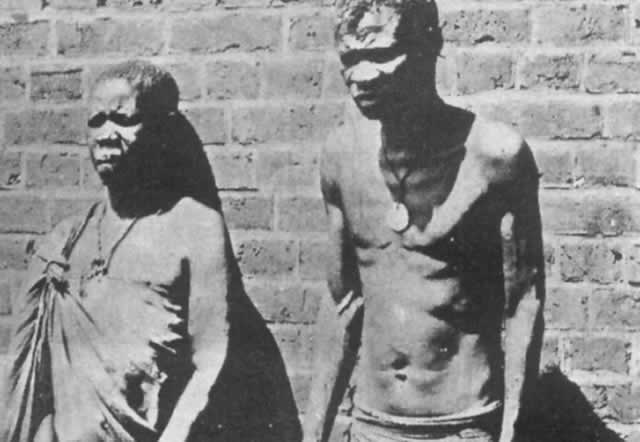Biographies of First Chimurenga heroes

Herald Reporters
Sekuru Kaguvi and Mbuya Nehanda
Ambuya Chahwe, the medium of the Nehanda spirit, was apprehended and hauled to her Majesty’s court in March 1898, alongside Zindonga Hwata and Gutsa for the alleged murder of one Hawkins Pollard, the brutal white Native Commissioner of the British South Africa Company who resided near Mazowe and terrorised natives in that district. She, along with Sekuru Gumboreshumba, the medium of Kaguvi, were arraigned in the High Court of Matabeleland which sat in Salisbury on February 20 1898 and were subsequently convicted on March 2 1898 in a case entered as “Regina (British Queen) versus Nehanda.”
Ambuya Nehanda and Sekuru Kaguvi were sentenced to death by hanging.
The execution of Ambuya Nehanda was authorised by the British High Commissioner for South Africa, Alfred Milner.
The British Imperial Secretary endorsed the hanging on March 28 1898.
The presiding Judge was Judge Watermeyer, while Herbert Hayton Castens, Esquire (the British term for gentleman) was the acting public Prosecutor Sovereign, and prosecuted on behalf of Her Majesty the Queen of England.
Kadungure Mapondera
He was arguably the last surviving gallant fighter of the First Chimurenga who waged a war of resistance against colonial occupation.
History records that he was born in Mazowe near Nyota Hills to VaBiri, the senior wife of Paramount Chief Gorejena Negomo and his birth is said to have been such a strenuous one that it needed the intervention of Mbuya Chahwe – the medium of the Nehanda spirit – who was also related to the Negomo family.
It was after Nehanda had made some offerings to the ancestors that the spirit of Chaminuka is said to have reincarnated as a ghost scaring away the spirit medium’s aides.
Nehanda was left alone in the Nyota Hills where she directly communicated with Chaminuka who prophesied that VaBiri will give birth to a baby boy who was to be famed as a great soldier.
When Nehanda descended the Nyota Hills, she was greeted by ululation from the women who had gathered around vaBiri’s hut after she gave birth to a baby boy who was immediately named Kadungure Mapondera Guvhute.
Indeed, Mapondera grew up to be a great soldier leading successful rebellions against white colonial rule. Mapondera was later arrested and tried in the then Salisbury in 1901 where he was accused of several crimes, including allegations that he wanted to wipe out the white community in the Mazowe area.
He was sentenced to seven years in prison, but died in 1907 in the arms of his wife who had visited him.
He is said to have gone on a hunger strike.
The historical records do not specify where Mapondera was buried, but as per tradition, his people were said to have collected soil from where he is believed to have died in Salisbury and placed it in the Nyota Hills, and gave the head of a cow and a length of cloth as a burial rite in 1940.
Chief Mashayamombe
While historical accounts of Chief Mashayamombe are scant, records at the National Archives indicate that the First Chimurenga started in Mhondoro, the area under his dominion.
After Chief Mashayamombe showed prospector Henry Hartley a rich reef of gold on the northern bank of the Mupfure River, he broke the news to Thomas Baines and German explorer Carl Mauch.
The then Natal Mercury wrote: “So, the question of the ancient Ophir is at last settled. We are all in a high state of excitement.”
Several years after the discovery in 1865, Cecil John Rhodes dispatched the Pioneer Column in 1890 where every member was promised 16 gold mining claims, but they soon met resistance as successive raids failed to subdue Chief Mashayamombe who had created a garrison on the banks of Mupfure River.
The Mashayamombe people are credited for killing the first white person during a military clash between the two sides.
Later, the local people killed two white men and this signalled the start of the First Chimurenga in Mashonaland. On June 21 1896, Captain J.F. Taylor was sent to attack Chief Mashayamombe and he was repulsed and retreated.
Several battles were fought and won by Chief Mashayamombe, forcing British South African Police to establish a fort at his kraal, which they called Fort Martins.
Chief Mashayamombe is said to have met his death in a battle and his forces eventually succumbed.
His body was never found and it is believed that he was decapitated and taken to Britain as a trophy.
Chief Chingaira Makoni
Records show that he was captured at Gwindingwe Hill in Rusape district during the Mashona Rebellion as related by Head Native Messenger Manditshona, a 76-year old veteran of the Native Affairs Department.
Manditshona stated that he was just a young man then, when Rhodesian soldiers gathered at a cave at Gwindingwe where Chief Chingaira Makoni was hiding with his wives, children and his people.
Manditshona said that Chief Chingaira Makoni was betrayed by one Tom Dlamini who acted as an interpreter who assured him that nothing was to happen to him if he was to come out of the cave.
As soon as he came out of the cave, he was apprehended and later tried by a Major from Bulawayo.
Chief Chingaira Makoni was killed by a firing squad and his body was later found in the Gwindingwe Hills without its head.











Comments